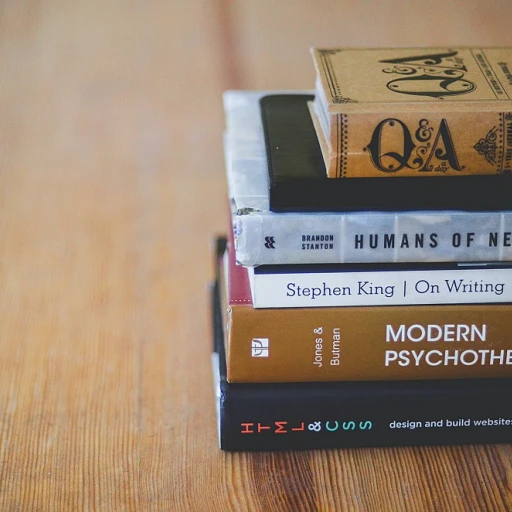
Understanding Learning Modalities
Comprehending Diverse Ways of Learning
In our ever-evolving educational landscape, understanding the different ways in which learning occurs can significantly benefit both educators and learners. A learning modality is essentially the preferred method through which a person absorbs, processes, comprehends, and retains information. Recognizing and working with these learning styles can enhance both the teaching experience and the students' capacity to learn effectively.
Generally, learning modalities are categorized into visual, auditory, and kinesthetic methods. These styles play a pivotal role in shaping educational approaches and have been foundational in the development of various classroom models and online education platforms.
Visual learners, for example, often grasp information best when it's presented through charts, diagrams, and other visual aids. This can be leveraged by incorporating more visual elements in training sessions, web-based courses, or any other educational settings.
Auditory learners, on the other hand, find that listening to lectures or engaging in discussions helps them understand and retain information more effectively. This suggests an opportunity to employ more auditory-oriented materials and approaches, such as audio books or interactive seminars.
Kinesthetic learners tend to prefer a hands-on approach, benefiting from physical engagement with the learning material. Practical exercises, simulations, and real-world application activities are more likely to result in better learning outcomes for these individuals.
Understanding these modalities not only aids in tailoring educational content to fit various cognitive styles but also in developing a more inclusive and effective learning environment. With thoughtful integration of these diverse modalities in education strategies, the potential for personal growth and enhanced knowledge retention is substantial. For more insights on crafting an effective learning documentation policy, visit our comprehensive guide.
Visual Learning Techniques
Visual Learning Modalities to Enhance Understanding
Visual learning modalities hold significant influence in the landscape of education, assisting learners in grasping complex concepts through imagery and spatial understanding. Leveraging this modality enables students to transform abstract ideas into tangible visuals, allowing for a clearer comprehension. Visual learners thrive in environments where information is presented through diagrams, charts, and written directions. This style is eminent for facilitating student learning by helping individuals to organize information visually, often found beneficial in both a classroom setting and online platforms. Many learners engage with educational content through various modalities learning frameworks, ensuring that visual modality elements are integrated into multiple modalities teaching approaches. Visual learning techniques often include:- Mind Maps: Used to represent ideas, concepts, and information spatially, helping students learn best by connecting different elements visually.
- Flowcharts: A popular tool in education for mapping processes, which can greatly benefit learners in understanding sequences and the relationships between various stages.
- Infographics: They serve as a powerful tool for summarizing information, helping students understand the depth of a topic at a glance.
- Videos and Animation: These provide dynamic and engaging ways for students to interact with content, greatly enhancing their ability to retain information.
Auditory Learning Approaches
Enhancing Learning Through Auditory Techniques
Engaging with auditory learning approaches can significantly enhance how students process information. This type of learning modality taps into the natural ability of learners to assimilate knowledge through listening, making it an invaluable part of any education or training program. Many learners discover that auditory styles resonate well with their preferred learning methods. With auditory learning, information retention happens when it is heard, rather than just read or observed. Hence, auditory learners might thrive in environments where lectures, discussions, and audio materials, such as podcasts or recordings, are readily available. The traditional classroom setting usually supports auditory learners through spoken explanations and verbal instructions. However, the adaptation of this model into online formats allows auditory learners to access classes in versatile ways. For instance, educational podcasts and audio books are excellent resources that cater to this learning style, making continuous learning achievable regardless of location. Moreover, auditory approaches work well when incorporated into a blended learning environment, where a mix of classroom, online, and hands-on experiences come together. This not only helps auditory learners but also supports those who benefit from multiple modalities. Finding effective learning strategies for continuous growth underpins the success of auditory techniques and aligns with the approach of promoting student learning in diverse ways. To optimize auditory learning, individuals in education or self-teaching must ensure that their study area is free from distractions that break concentration, allowing auditory input to be processed without interruption. Creating the right environment ensures that learners can integrate auditory methods effectively into their continuous growth journey. For more tips on enhancing learning through auditory techniques, explore these effective learning strategies.Kinesthetic Learning Strategies
Embarking on a Hands-On Learning Journey
The kinesthetic learning modality is often characterized by a hands-on approach, making it uniquely different from visual and auditory styles. This method emphasizes physical engagement, transforming environments like the classroom into active spaces where learning occurs through movement and touch. For many students, especially kinesthetic learners, this strategy helps solidify understanding and retention of new information better than traditional models. In educational settings, activities such as role-playing, simulations, workshops, and experiments can greatly enrich the student learning experience. This immersive learning style encourages a deeper connection with the material, as learners physically interact with it. By integrating such activities, educators can cater to multiple modalities, ensuring that they meet the diverse needs of various learning styles within a classroom. For those exploring kinesthetic techniques, the opportunity to apply knowledge in real-world contexts offers substantial benefits. Building models, handling tools, or participating in field trips allows students to learn best through direct engagement. This active learning modality is not just limited to formal education; it can be equally effective in corporate training and personal development scenarios. While kinesthetic learning can be highly effective, it is essential to recognize that not every person will thrive exclusively within one learning modality. Blended learning environments, which combine visual, auditory, and kinesthetic elements, often provide the most enriching educational experiences. By embracing flexibility in teaching styles, educators and trainers can better accommodate cognitive styles, offering adaptations that promote personal and academic growth for all learners.Blended Learning Environments
Integrating Multiple Learning Styles
In today's educational landscape, embracing a variety of learning modalities has become essential in catering to diverse student needs. Blended learning environments skilfully combine traditional classroom experiences with online resources, offering a more holistic approach to education. This method acknowledges that learning occurs in multiple ways and allows for flexibility in teaching styles to optimize student learning. Blended learning effectively supports visual, auditory, and kinesthetic learners by incorporating elements from each of these styles. Digital platforms deliver visual aids, like videos and infographics, which are highly beneficial for visual learners. Simultaneously, auditory learners benefit from podcasts and discussions available online, while kinesthetic individuals engage through interactive simulations and hands-on tasks integrated into the curriculum. A major advantage of blended learning models is their adaptability. These settings allow educators to tailor content to individual student needs, promoting personal growth through preferred learning modalities. Learners can choose tasks that align with their cognitive styles, leading to enhanced motivation and engagement. Incorporating blended learning environments also paves the way for continuous education, as learners have round-the-clock access to educational materials. Online class resources ensure students can revisit concepts, offering them greater control over their learning journey. This has proven beneficial for different learners who may require additional time to assimilate information in their preferred learning style. The journey to effective learning is a personalized one, and blended learning environments empower learners by offering choices that align with their individual strengths. By accommodating different modalities, education becomes a dynamic experience that encourages lifelong learning.Adapting Learning Modalities for Personal Growth
Adapting to Different Learning Styles
Personal growth in education calls for a considerate approach to adapting various learning styles or modalities. Recognizing that students learn differently, utilizing a mixture of visual, auditory, and kinesthetic learning strategies is essential. Every learner exhibits a preferred learning style, however, incorporating multiple modalities can significantly enhance the student learning experience.
Incorporating a blended learning environment, a student can benefit from an education model combining traditional classroom settings with online elements. Blending different approaches helps learners tailor their education path, creating a flexible atmosphere where the learning occurs in an approachable manner. For instance, if a student has a strong affinity for the visual modality, employing visual learning methods such as diagrams and videos can help reinforce auditory or kinesthetic experiences. This integration bolsters understanding and retention through multimodal strategies.
Exploring the capacity to learn best using different cognitive styles should always remain a priority for both educators and learners. This focus encourages adaptability, a crucial trait for enduring continuous learning through various life stages.












